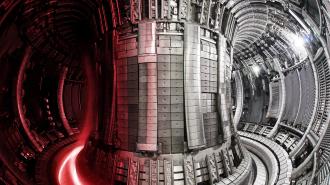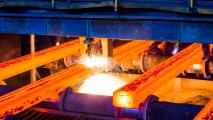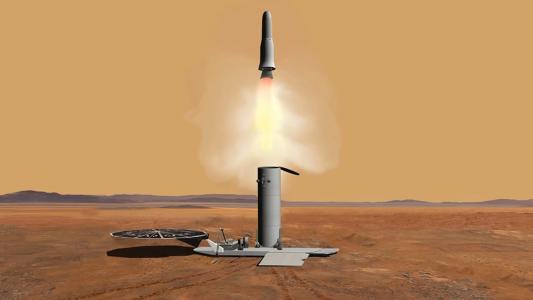Fusion reactor breaks 24-year-old nuclear record
The world’s largest working fusion reactor has smashed a record it set 24 years ago — a milestone, the researchers suggest, that means an even bigger reactor currently under construction will work even better.
The 411 on fusion: Nuclear fusion occurs when two hydrogen atoms merge. This process releases a tremendous amount of energy — it’s literally enough to power the sun and other stars.
If we could harness fusion reactions on Earth, we’d have a near-limitless source of energy that doesn’t produce carbon emissions, leave behind long-lasting radioactive waste, or depend on variable environmental conditions, like sunlight and wind.
Fusion releases a tremendous amount of energy — it’s what powers the sun and other stars.
ISO: a better fusion reactor: Fusion only happens under tremendous heat and pressure, so we need fusion reactors that can not only create those conditions, but withstand them. For fusion to be a reliable energy source, the devices also need to be able to sustain the reaction.
Scientists have already built reactors that can trigger fusion, but they only work if we put more energy into them than we get out of them — and that’s not going to help the world meet its energy needs.
What’s new? The Joint European Torus (JET) is one of those fusion-triggering reactors. The device, which first became operational in 1983, is owned by the U.K. Atomic Energy Authority, but a multinational research consortium called EUROfusion operates the machine.
In 1997, JET set an fusion record by releasing 21.7 megajoules (MJ) of heat energy in a 1.5-second burst (1 MJ is roughly equivalent to the kinetic energy of a 1 ton vehicle moving at 100 mph).
The fusion reactor has now broken its own record, releasing 59 MJ of energy over the course of 5 seconds — but just like in 1997, the experiment still required more energy than it produced.
Why it matters: JET isn’t the same fusion reactor it was 24 years ago — since 2009, researchers have been rebuilding parts of the device to test out concepts they planned to integrate into ITER, a megaproject fusion reactor currently under construction in France.
“The JET results are a strong confidence builder that we are on the right track.”
Bernard Bigot
ITER is one of the biggest scientific collaborations in history, with $25 billion in funding coming from the E.U., U.S., Russia, China, India, Japan, and South Korea.
Construction of ITER began in 2013, and when it becomes operational (possibly as soon as 2025), it’ll be the largest fusion reactor in the world — and, many hope, the device that finally makes usable fusion energy a reality.
“For the ITER Project, the JET results are a strong confidence builder that we are on the right track as we move forward toward demonstrating full fusion power,” Bernard Bigot, Director General of ITER, said in a press release.
We’d love to hear from you! If you have a comment about this article or if you have a tip for a future Freethink story, please email us at [email protected].






